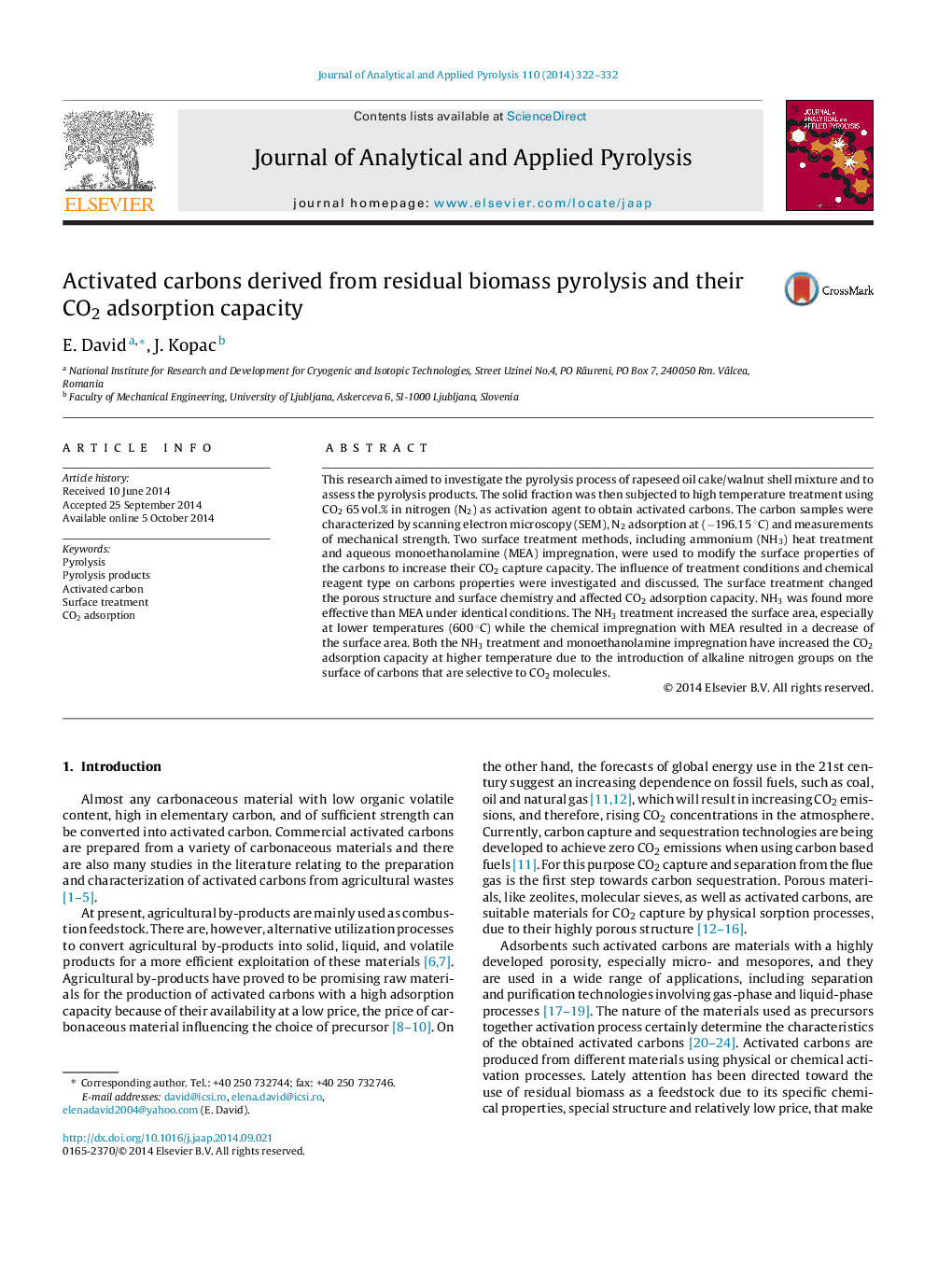| کد مقاله | کد نشریه | سال انتشار | مقاله انگلیسی | نسخه تمام متن |
|---|---|---|---|---|
| 1197323 | 1492967 | 2014 | 11 صفحه PDF | دانلود رایگان |

• Rapeseed oil cake/walnut shells mixture was subjected to the pyrolysis process.
• Pyrolysis products were assessed and solid fraction was transformed in sorbent.
• Structure, characteristics and behavior of activated carbons were determined.
• By applying chemical treatments the surface properties of carbons were modified.
• Ability to capture CO2 reveals that their adsorption capacity was improved.
This research aimed to investigate the pyrolysis process of rapeseed oil cake/walnut shell mixture and to assess the pyrolysis products. The solid fraction was then subjected to high temperature treatment using CO2 65 vol.% in nitrogen (N2) as activation agent to obtain activated carbons. The carbon samples were characterized by scanning electron microscopy (SEM), N2 adsorption at (−196.15 °C) and measurements of mechanical strength. Two surface treatment methods, including ammonium (NH3) heat treatment and aqueous monoethanolamine (MEA) impregnation, were used to modify the surface properties of the carbons to increase their CO2 capture capacity. The influence of treatment conditions and chemical reagent type on carbons properties were investigated and discussed. The surface treatment changed the porous structure and surface chemistry and affected CO2 adsorption capacity. NH3 was found more effective than MEA under identical conditions. The NH3 treatment increased the surface area, especially at lower temperatures (600 °C) while the chemical impregnation with MEA resulted in a decrease of the surface area. Both the NH3 treatment and monoethanolamine impregnation have increased the CO2 adsorption capacity at higher temperature due to the introduction of alkaline nitrogen groups on the surface of carbons that are selective to CO2 molecules.
Journal: Journal of Analytical and Applied Pyrolysis - Volume 110, November 2014, Pages 322–332